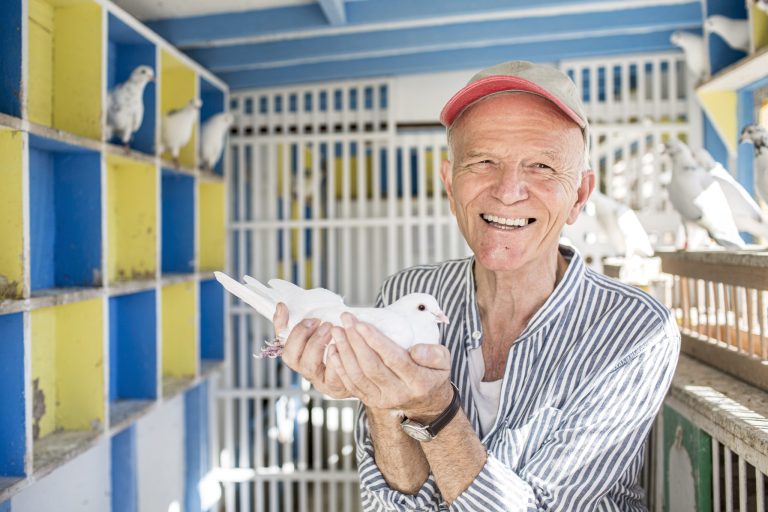Anton van Dalen, who in his unique and vivid writing chronicled the East Village’s transition from slum to gentrification, died on June 25 at his home in the community to which he devoted his life. He was 86.
In his view, East Village is sometimes desolate, sometimes bustling, sometimes devastated, and sometimes full of secret life.[I] It always starts with the family, then the street, the neighborhood, the city, the world,” Van Dalen wrote in the letter. Allergic the critic John Yau wrote in an email in 2020. Indeed, he seems to make no distinction between practicality and aesthetics in his own life: Yau recalls cats and dogs roaming around the studio and apartment, surrounded by free-range chickens, which he keeps “so his children can have fresh eggs in the morning.”
Van Dalen is perhaps best known for his work Avenue A Cut-Out Theater (1995-2016), in which he transformed the house he had lived in since 1972 into a microcosm of the changing tides of the East Village, telling the story of the neighborhood’s ongoing transformation through cutouts on a model of his apartment.

Van Dalen was born in 1938 in Amstelveen, the Netherlands, into a conservative Calvinist family. Dutch artists such as Van Gogh, Rembrandt and Vermeer influenced him. His work depicts life in meticulous, mundane, and sometimes vulgar detail. The devastation of war would also mark Van Daren’s art throughout his life, as would the unflinching tenderness required to weather such destruction. Even as his family assets were seized by the Nazis, he began raising pigeons: he would keep a hand-painted chicken coop on the roof of his East Village apartment, the bird a symbol of freedom and community that runs throughout his work.
The artist graduated from the Amsterdam School of Graphic Design in 1954; that same year, his family fled to Toronto. In 1966, Van Dalen arrived in his beloved East Village. “Back then,” he told Tiernan Morgan in a 2016 interview Allergic In an interview, he said, “It looked like something out of World War II.” Nevertheless, in the new chaos, he found ways to cultivate an artistic attitude toward life. He took to the streets with a notebook and documented the neighborhoods with humor and sentimentality.
Van Dalen found his community not by accident but through perseverance. He spent two to three years dialing a number. New Yorker Cartoonist Saul Steinberg’s writing in a phone book eventually landed him an assistant position that lasted three decades. “I went to all the galleries,” he told Allergic“I don’t crave recognition, but I want to feel like I was involved in some way.”

A friend took him to alternative spaces like ABC No Rio, and he subsequently joined community collectives like PAD/D and Group Material. There, he met artists like Martin Wong and David Wojnarowicz, who helped him hone his work through like-minded ideas. “Before I met these people, I felt like a dog with its tail between its legs,” he says. “They made me feel like what I was doing wasn’t some kind of sideshow.”
Van Daren’s work over the ensuing decades reflects the convergence of his interests and commitments as he grew and developed. Work and Nature (1997), a series of porcelain and enameled steel panels located at the Nevins Street subway station in Brooklyn, pays tribute to the public, celebrating people’s work and acts of care: planting a tree, playing guitar. In Crusade (2019), an object that is both organic and technological spits out bombs in the shape of a cross, paying homage to the fervor and destruction of patriotism.
During the COVID-19 lockdown, Van Daren noticed the prevalence of a “military language” that brought back memories from wartime, memories he shared with Yau in 2020. But as always, he brought a humanistic perspective to his response, creating a series of graphic drawings on white paper with blue lines. Yau writes that of all the artist archetypes, “Van Daren represents the least recognized: the nonhero, the civic-minded observer and recorder.”
Van Dalen is survived by his brother, Leen; his children, Marinda and Jason; their spouses, René van Haaften and Ali Villagra; and grandchildren, Cleo, Aster and Diego.


